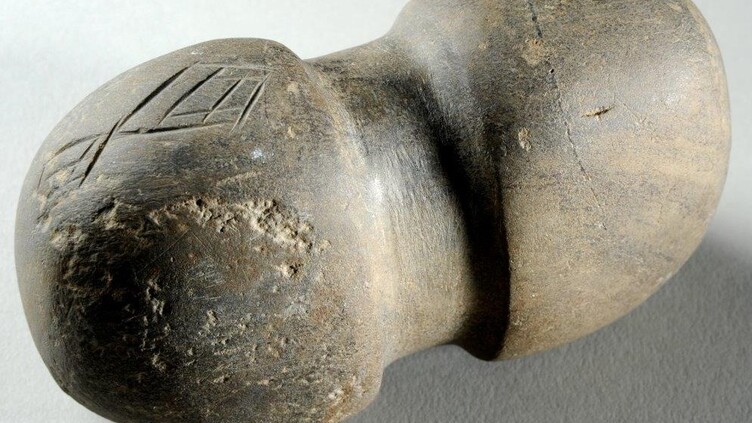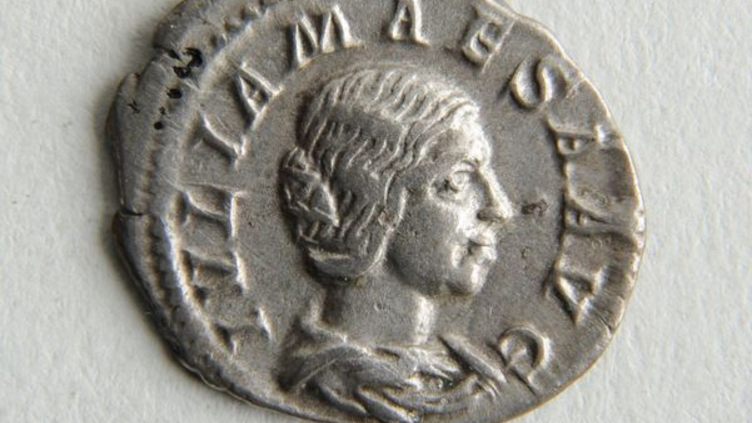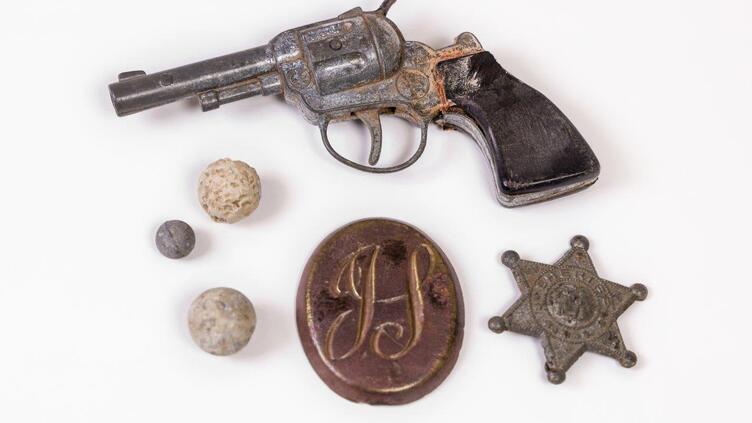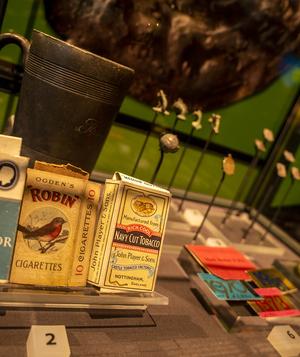Archaeology
The archaeological collections of Experience Barnsley offer some important insights into the lives of inhabitants of the region over thousands of years. Finds of prehistoric flint and stone tools provide the best understanding we currently have of Mesolithic, Neolithic and Bronze-Age activity in the region. Everyday life in Roman South Yorkshire is shown through finds of pottery, jewellery and an extensive collection of coins. The region's medieval ecclesiastical history emerges from the artefacts excavated at Monk Bretton Priory, including decorative floor tiles, jugs and candlesticks, and the remains of a pewter chalice placed in grave at the site.
Reconstructed Roman bowl, mid 3rd – mid 4th century AD
Found at Billingley Drive, Thurnscoe. A Roman farmstead was excavated in Thurnscoe in the early 2000s. As well as evidence of farming, domestic items like this bowl was found. The bowl was put back together by conservators in 2012
Bronze Age Waisted Stone Hammer Head
Found at Wharncliffe Wood. The decoration scratched into the surface looks like a stylised fish. Barnsley finds from the Bronze Age (2300 – 800 BC) also include a flint dagger from Birdwell and a spear head from Penistone.

Roman coin of Julia Maesa, AD 221-226
Found in Darfield. Julia Maesa’s fame began when her sister, Julia Domna, married Septimius Severus, who soon after became Roman Emperor. This coin is one of a hoard found at Darfield in 1947 by a worker digging up the road.

Black-glazed ceramic floor tile, Monk Bretton Priory, AD 1200-1300.
The Priory at Monk Bretton was founded in 1154 and was a busy, important place until its dissolution in 1538 under King Henry VIII. Many objects have survived including tableware, floor tiles and window glass.
Silver penny of David of Scotland, AD 1141
Found in Cudworth. King David (1082-1153) was a powerful medieval king with links to England and Normandy. He issued the first Scottish royal coinage after capturing Carlisle. This gave him access to the city’s mint and local silver mines.
Blue Glass Jug Handle
Silkstone glasshouse was established in the mid 17th century by the Pilmey family and produced glass until the mid 18th century & investigated by Denis Ashurst, a well-known local archaeologist.
Decorated clay tobacco pipe
Found at Houndhill, Worsbrough. Houndhill is a house built around 1566 with farm buildings. The skull and crossbones on this pipe is the symbol of the 17th Lancers cavalry regiment.
Charles II Silver ‘Heart’ Cufflink, 1662
This silver cufflink is a romantic treasure find, discovered by a Barnsley metal detectorist. It features a heart to celebrate the marriage of King Charles II to Catherine of Braganza in 1662.

Ken Cocking’s Metal Detector Finds
Ken Cocking was a local metal detectorist who collected interesting objects he found in the ground. This small collection represents his love for Barnsley’s past. It features a charming metal frog, a pigeon ring, John Smiths horse brasses, a whistle, cap gun and even a spur worn by a horse rider in the 1600s.
.jpg)
Pilgrim’s Lead Ampulla, 1270 to 1450
A lead vial used to collect holy water on visits to religious sites. Although damaged from being in the ground for centuries, it is still a special and rare object. It was designed to look like a reliquary chest which would hold holy relics. Kindly donated by Andrew Lacey

